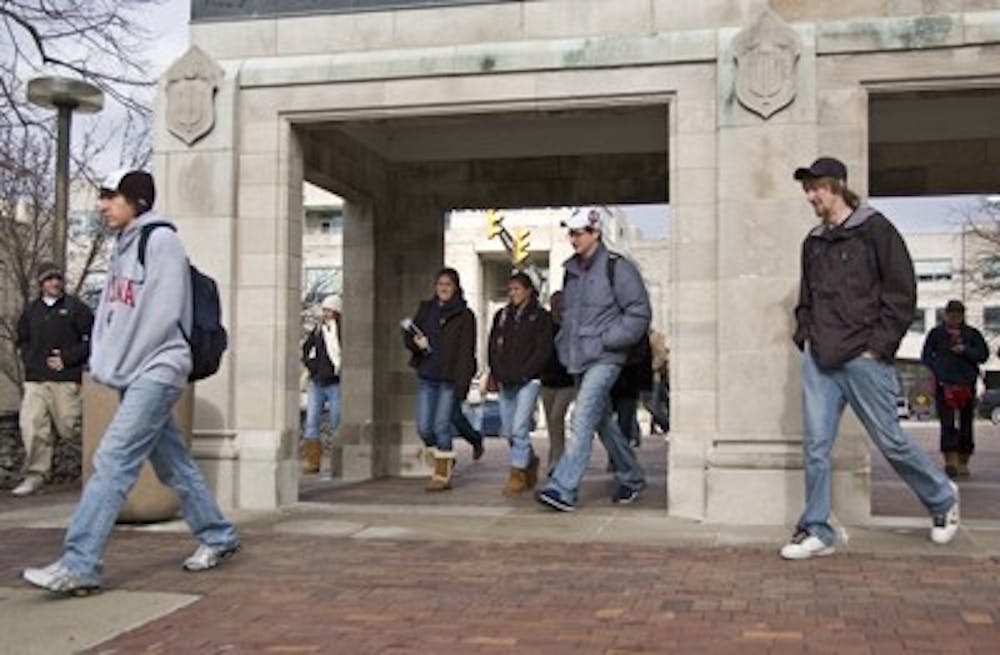If walking were an Olympic event, IU would be Greece. Students have all made the long treks between Ballantine Hall, the stadium, various residence halls, the Indiana Memorial Union, Kirkwood and beyond. But is walking keeping us healthy?\n“Walking is definitely healthy,” said Andy Fry, assistant director of IU RecSports. “You are using the biggest muscles, which are your legs, for a sustained amount of time and if you do it at an elevated pace you can even get it into aerobic status.”\nThe National Center for Chronic Disease and Prevention and Health Promotion advises “moderate amounts of daily physical activity ... such as brisk walking for 30 minutes,” for people of all ages. By walking to class instead of riding the bus, students can get in that recommended time, as some students already know.\n“Walking is better than taking the bus,” said freshman Hannah Thompson, who walks, on average, about two miles on a given school day. “Walking keeps you active in some form if you’re not doing anything else.”\nEven a little bit of walking is beneficial to the human body.\n“As little as 2,000 steps in a day can reduce your risk of disease,” said RecSports Personal Training Coordinator Allison Chopra. “It’s a great way to supplement your exercise by getting extra walking in to break up lazy points.”\nOther exercise is a great addition to walking, although it is not always necessary, Fry said.\n“If you are active most days out of the week then you’re meeting the requirement of what you should have,” Fry said, “That’s the bare minimum.”\nStudents who are looking to lose weight might want to do a little more, and take a good look at other habits, Fry said.\n“If you’re walking yet your diet is horrible or if you never stretch or do any sort of strength training, then it may not be enough,” Fry said.\nHe points to five components of exercise as important indicators of health: muscular strength, muscular endurance, cardiovascular endurance, flexibility and body composition – which is the ratio of lean muscle in your body to fat. Walking only helps with some of these elements.\nBut some students believe it is necessary to exercise on top of walking.\n“Walking doesn’t get your heart rate going,” said sophomore Dan Tawfik, who walks an average of two miles a day.\nOthers said it would be better to exercise as well, but that walking is easier to fit in their schedule.\n“I don’t work out because I don’t have time,” said sophomore David Klapman, who walks at least one mile a day. “Exercise builds on itself, giving you a better chance of improving your health.”\nChopra said it is important that students enjoy whatever activity they choose for exercise. \n“With exercise, as long as it is the same intensity, it’s just as good,” Chopra said. “I always stress most to do exercises you enjoy doing.”
Walking 2,000 steps a day may reduce heart disease
Exercise is less effective if students are eating poorly

Get stories like this in your inbox
Subscribe





